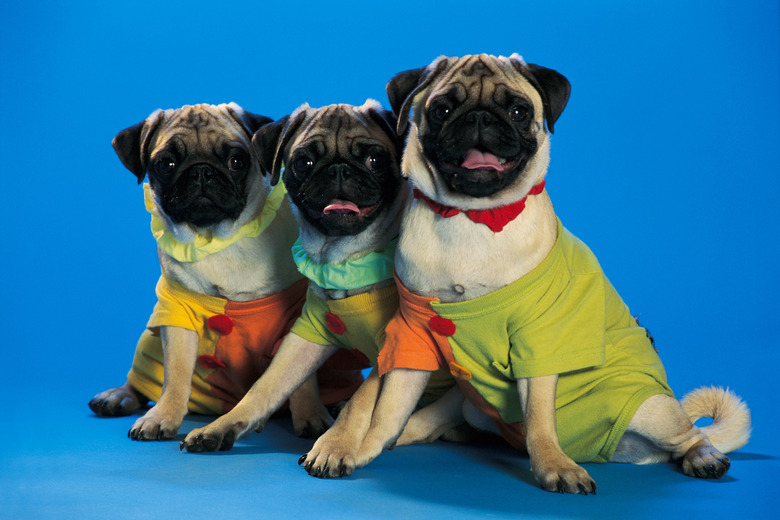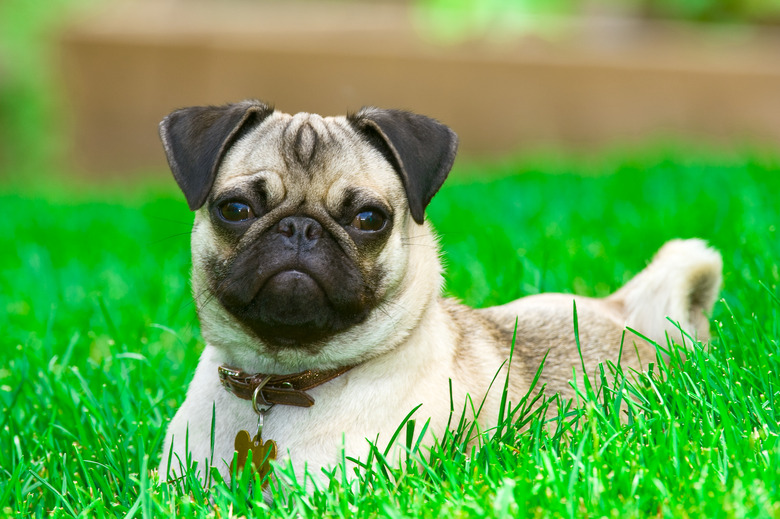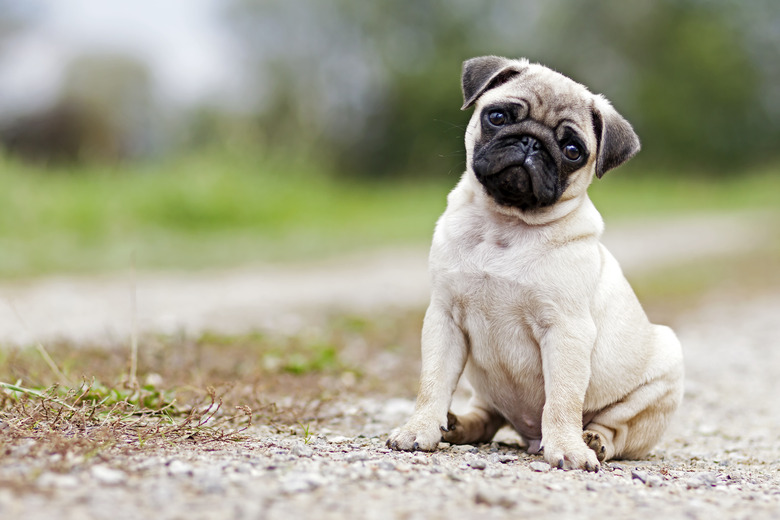Different Types Of Pugs & Pug Mixes: Here Are The Breeds & Colors Of Pugs
The stocky little dog with the easily recognizable mask and flat face was first registered into the American Kennel Club (AKC) in 1885 as part of the toy group, but it is thought this breed has origins as far back as 400 B.C in Asia. Apparently, Napoleon's wife Josephine owned a pug named Fortune, and Buddhist monasteries in Tibet kept the dogs as pets. Though they are called by a few names, including Chinese pugs or just pugs, the different names refer to one registered breed with a fairly distinctive personality and appearance.
Different pug varieties and colors
Different pug varieties and colors
Registered pugs come in three distinct colors, though there are more than three colors found in the breed. The fawn pug is probably the most recognizable, with the black pug coming a close second. As its name would suggest, the apricot pug is a tad darker than its fawn counterpart, with a slightly reddish hue. More rare are the silver pugs, brindle pugs, and the genetically tweaked white pugs. With the exception of the white pug, all colors can have the trademark black muzzle that provides their mask.
The differences in color might lead people to think there are different pug varieties, but in fact all pugs are considered one breed by the AKC. The breed standard, however, is fawn and black. But most people people are drawn to this breed because of their stature and personality, rather than an interest in showing this adorable companion pet.
Different breeds of pug mixes
Different breeds of pug mixes
Pugs can be crossed with a variety of other dogs to create different breeds of pug mixes. When one pug parent is a pug and the other parent is a beagle, that cross is called a puggle. Typically in a puggle, the male parent is the pug and the female parent is the beagle. This is because there are more health problems that develop when the beagle is the male parent. The "chug" is a cross between and pug and a chihuahua. When the parents are a pug and a Boston terrier, the offspring is called a "bugg."
While the crossbreeds don't have the same health problems that a pure-bred dog can have, these crossbreeds can develop their own health problems since the pug is a brachycephalic breed that typically has breathing problems. If the snout is short in the mixed offpsring, the offspring can have breathing issues too.
Pug personality traits
Pug personality traits
Pugs are adorable. Though they might have different coats, pugs generally share the same fun-loving, affectionate demeanor. (This naturally varies from animal to animal, of course). Their serious muzzle can crack into an irresistible smile, demonstrating that — despite how seriously the pug takes their job guarding you and your family — they also love to be the class-clown.
Pugs are not known to be yappy dogs although they do bark when someone or something is in their territory as an alert, and tend to get along well with both people and other animals. Be prepared for attention and questions on walks — dog lovers are naturally drawn to these unthreatening little love bugs whose natural tendency to tilt their heads when greeting you makes them all the more charming.
Gender differences and types of pugs
Gender differences and types of pugs
If you are thinking about getting a pug, you should be aware these are very affectionate animals. They want to be near you much of the time. Because they are not recommended for outdoor living, this means the dog will shadow you wherever you go in your home. Male pugs are more notorious for this than females, who tend to be more independent. A female pug will do what makes her happy, whether you're around or not.
Considerations when choosing a pug
Considerations when choosing a pug
The pug is prone to breathing problems thanks to their flattened faces, which require a bit more hygienic attention, due to the distinctive wrinkles.
The pug is also not recommended for households that cannot accommodate an indoor dog, because pugs are more sensitive to heat and humidity. Because they are a brachycephalic breed — a short-nose breed — they can overheat quickly in hot temperatures or humidity. Similarly, extreme cold temperatures are challenging due to their poor ability to regulate body temperatures.
When not hot outside, you should exercise your pug regularly to prevent obesity, which can shorten his or her life. And the final consideration is shedding. A pug's coat is short and requires very little grooming, but all types of pugs shed a lot. Regular bathing can help keep your pug-loving home cleaner.
If well socialized from a young age, pug varieties make excellent family pets and are considered a good choice for first-time dog owners. They're so charming, some are even able to befriend the family cat.


